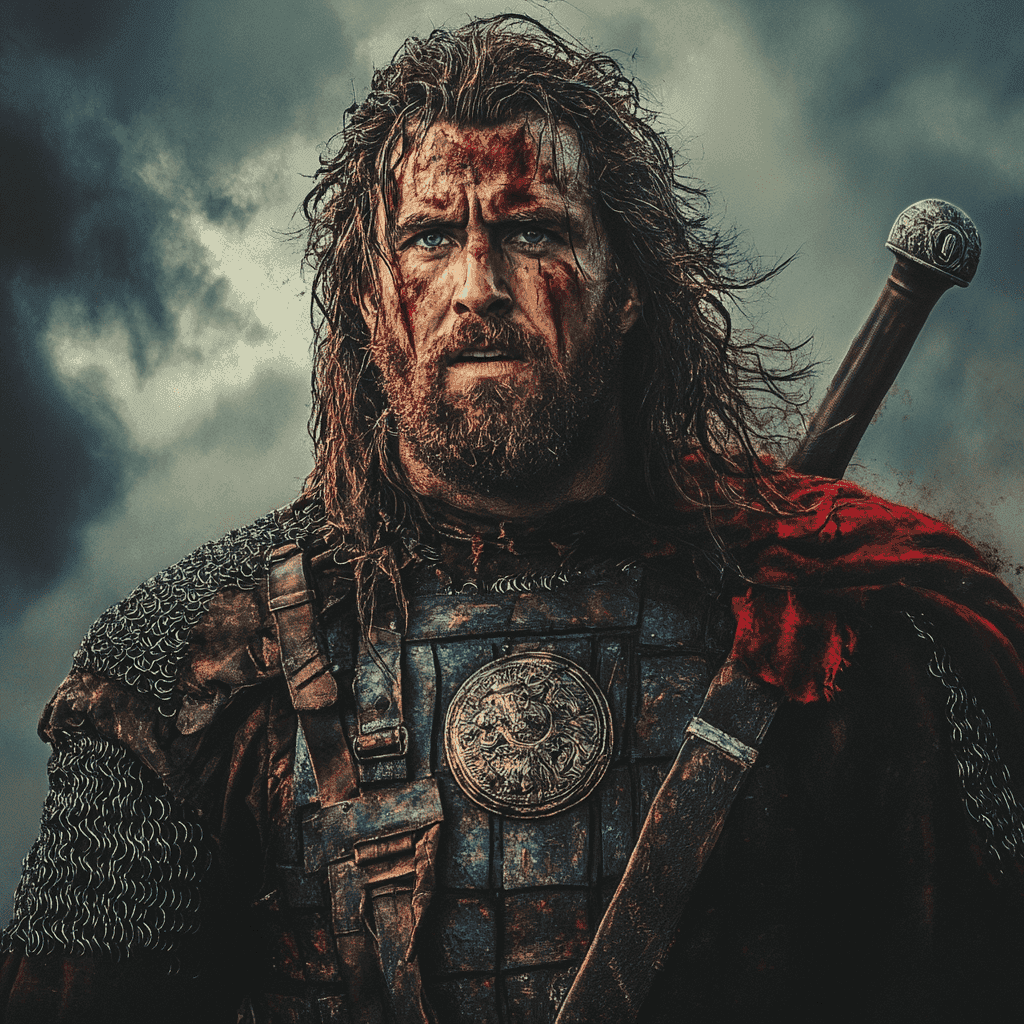Table of Contents
William Wallace: The Legendary Scottish Warrior of the 13th Century
(Meta Description: Discover the story of William Wallace, the fearless leader of the Scottish warriors in the 13th century. Explore his battles, resistance against English rule, and lasting impact on Scotland’s history.)
Introduction
William Wallace is one of Scotland’s most legendary figures, remembered for his heroic resistance against English rule in the late 13th century CE. As a leader of Scottish warriors during the Wars of Scottish Independence (1296–1328), he became a symbol of freedom, defiance, and national pride.
His most famous victory at the Battle of Stirling Bridge (1297) showcased his tactical brilliance, proving that an outnumbered Scottish force could defeat the powerful English army. However, his rebellion ultimately ended in betrayal and execution, securing his place as a martyr for Scotland’s independence.
This article explores Wallace’s rise, his greatest battles, and his enduring legacy in Scottish history.
The Rise of William Wallace
Origins and Early Resistance
- Born around 1270 CE to a noble but minor landowning family.
- Likely received military training and education in warfare.
- First emerged as a leader in 1297, launching guerrilla-style attacks against English forces occupying Scotland.
The English Invasion of Scotland
- In 1296, King Edward I of England (“Longshanks”) invaded Scotland and defeated the Scottish army at the Battle of Dunbar.
- The Scottish king, John Balliol, was forced to abdicate, and Scotland fell under English control.
- Wallace rose as a leader of resistance, rallying warriors to fight for independence.
William Wallace’s Greatest Battles and Military Strategy
The Battle of Stirling Bridge (1297): A Stunning Victory
One of Wallace’s greatest achievements was defeating the English at Stirling Bridge on September 11, 1297.
- Wallace and Andrew Moray led a smaller Scottish force against a much larger English army.
- The Scots used terrain to their advantage, forcing English forces to cross a narrow bridge.
- As the English advanced, the Scots cut off their escape route and launched a ferocious attack, resulting in a crushing defeat for the English.
- This victory cemented Wallace’s reputation as a military genius and Scottish hero.
William Wallace as Guardian of Scotland
- After Stirling Bridge, Wallace was appointed Guardian of Scotland, effectively leading the Scottish resistance.
- He conducted raids into northern England, striking fear into the English.
- His leadership united many Scottish clans in the fight for independence.
The Battle of Falkirk (1298): Wallace’s Defeat
- King Edward I personally led an army to crush Wallace’s forces.
- The Scots used schiltrons (tight defensive formations of spearmen) to counter the English cavalry.
- However, English longbowmen devastated the Scottish lines, leading to a brutal defeat.
- Wallace resigned as Guardian of Scotland but continued fighting for freedom.
William Wallace’s Capture and Execution
Betrayal and Capture (1305)
- Wallace continued resisting English rule but was betrayed by Scottish knight John de Menteith.
- Captured and sent to London, where he was put on trial for treason—despite never swearing allegiance to Edward I.
Execution and Martyrdom
- On August 23, 1305, Wallace was hung, drawn, and quartered, a brutal execution meant to crush Scottish resistance.
- His last recorded words were, “Freedom!”, reinforcing his place as a Scottish martyr.
- His severed limbs were sent to Scottish towns as a warning, but his death only fueled the fight for independence.
William Wallace’s Legacy in Scotland and Beyond
Inspiration for the Wars of Scottish Independence
- Wallace’s resistance inspired Robert the Bruce, who later led Scotland to victory at the Battle of Bannockburn (1314).
- His patriotism and sacrifice made him a national hero in Scottish history.
Wallace in Scottish Culture and Modern Media
- His life is commemorated by the Wallace Monument in Stirling.
- His story was popularized by the movie Braveheart (1995), though with historical inaccuracies.
- He remains a symbol of resistance and national pride in Scotland.

Conclusion
William Wallace’s legacy as a fearless warrior and symbol of Scottish independence remains as strong today as it was in the 13th century. His bravery, tactical brilliance, and unwavering fight for freedom continue to inspire Scotland and people worldwide.
Though he did not live to see an independent Scotland, his sacrifices laid the foundation for future victories, ensuring that his name would never be forgotten in history.
